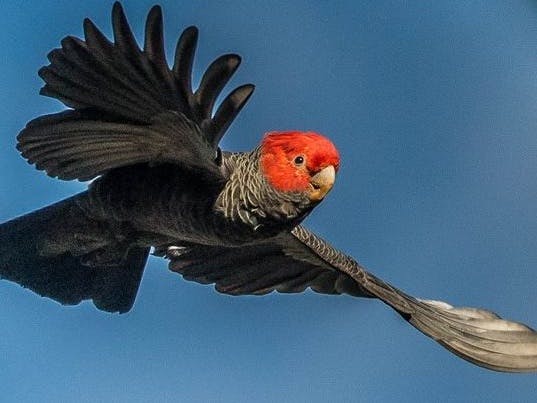"The Gang-gang cockatoo, the animal emblem of the Australian Capital Territory, will be officially listed as a threatened species after a large decline in its numbers due to the climate crisis and the bushfire disaster"... (the guardian.com)
Over recent years fire and flood has severely affected wildlife across Australia. Some of which is only found in Australia, and many of those animals are endangered. Each year the staff from conservation organisations, and national parks attempt to protect the remaining pockets of nature reserve and native bushland to assist the survival of the remaining flora and fauna in Australia. What if you could add capacity to their endeavours? What if there was a way to assist at the fraction of the cost hiring more people and provide more information to focus their efforts?
Recently the has been the convergence of small scale, low cost and low power electronic hardware with the advancement of machine learning. This technology now allows many novel uses for machine learning not previously feasible.
The concept is to position a grid of small. unobtrusive small image classification sensors across a nature reserve to monitor the existence and travel of native animals, recording their number, species, and even direction of travel. Powered by small solar panels and batteries, using a lora network to send the information over long distances not normally covered by cellular or wifi networks.
This combined with several other sensors like water level, carbon dioxide sensors, temp and humidity could could monitor the vital signs of our valued national parks and native bushland.
This information could be used to inform conservation activities, and develop mitigations for damaged caused by climate change, vandalism or urbanisation.
Tracking animals. The First Step... Hearing about the decline Gang-gang cockatoo, and other threatened and endangered species is becoming more common. So the first proof of concept was to develop the WIO and vision AI modules to detect the Gang-gang, as well as a few other common native birds for image discrimination.
I started with: https://wiki.seeedstudio.com/Train-Deploy-AI-Model-A1101-Grove-Vision-AI/
to train the model on the birds. I used the manual process, gathering image files from the internet (I would use locally gathered images for the production version). Then tagged using the roboflow method, then trained using the google collaboration workspace method described in the tutorial above.
I followed the tutorial page: https://wiki.seeedstudio.com/Grove-Vision-AI-Module/#function
then modified the code to suit my needs. I also added the lora node send code from the Seeed wiki.
The project concept could be used for a number of environmental monitoring use cases for example:
Expanding the ML models to include other threatened and endangered species, placing hardware and specific model for each animal.
Training the models for pest / competitive species/ invasive species to monitor their locations and develop mitigation strategies.
Monitoring specific environmental factors with the addition of other environmental sensors e.g. humidity, temperature etc.
With the addition of smoke/CO2 sensors these devices could be used to detect the early onset of bushfires. This would allow early intervention and accurate location of fires beyond the normal visible ranges, without the use of aircraft. The temperature and humidity could inform a probability of fire indication system using real-time data from the ground within the monitoring area, rather than regional weather station data. The early detection and geolocation of fires continues to be a problem during the bushfire season.
Monitoring human effects on the environment e.g. overuse of areas, vandalism and illegal activities. Recently there have been a number of cases of people entering areas of national parks and chopping firewood. This removes valuable habitat for threatened and endangered wildlife. Many of the Australian bird species require hollows in old or dead trees.
You might be asking why not trail cams? Well trail cameras are more expensive, few have trainable machine learning options, and usually require a human going to the site to check the images, or a mobile / wifi link. So not entirely suitable for the remote locations. The lora link provides a low data, low power and potentially long range network option where normal cellular systems are not available (depending on the receive antenna on the gateway).
The added advantage of this concept is it is relatively low cost, very low data throughput and is highly scalable. Unlike other tracking systems, no devices are required to be attached to the animals themselves. However similar tracking data would be available.
The scalability of this concept is only limited by budget and availability of the hardware. I.e. you could expand by number in each area, by species, by function (listed above). The data could also be exported to a web dashboard for people to view and learn about each species.
Here are some quick renderings of the hardware deployments:
This initial prototype utilised a WIO terminal and Grove AI camera, although I did test some of the other sensors in the kit. I used a Pi Zero and lora hat to debug the lora send functionality.
The making of the ML model via the tutorial was relatively straight forward, I had only a few issues which were resolved by repeating the process. I am still having a few issues with the debugging of the software between the detection and the lora messages. I have used both my own Arduino code directly (developed as above from the wikis) and the SenseCraft V0.2 firmware for the auto process and lora uplink. Detections were initially problematic using static images, and the training data I had access to. For an actual deployment the training data set would need to be much larger and would probably benefit from some live captures (probably at the zoo or bird park). Overall I enjoyed the project, even the long debugging process.
I see this project has potential to answer some of the information requirements that the the environmental protection organisations have, its low cost and scalability make it easily accessible and readily deployable.
















Comments
Please log in or sign up to comment.